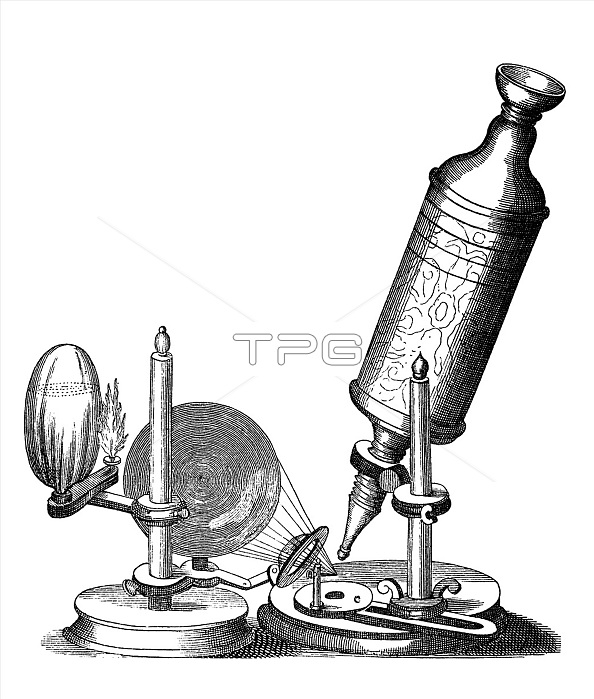
The hand-crafted, leather and gold-tooled microscope Robert Hooke used to make the observations for Micrographia (1665), was originally constructed by Christopher White in London. The microscope shared several common features with telescopes of the period: an eyecup to maintain the correct distance between the eye and eyepiece, separate draw tubes for focusing, and a ball and socket joint for inclining the body. The microscope body tube was constructed of wood and/or pasteboard and covered with fine leather. When the draw tubes were fully closed the microscope measured six inches long. Hooke used a bi-convex objective lens placed in the snout and two additional lenses, an eyepiece lens and a field lens. To combat dark specimen images, Hooke designed a method of concentrating light on his specimens. He passed light generated from an oil lamp through a water-filled glass flask to diffuse the light and provide a more even and intense illumination for the samples.
| px | px | dpi | = | cm | x | cm | = | MB |
Details
Creative#:
TOP22174042
Source:
達志影像
Authorization Type:
RM
Release Information:
須由TPG 完整授權
Model Release:
N/A
Property Release:
No
Right to Privacy:
No
Same folder images:

 Loading
Loading